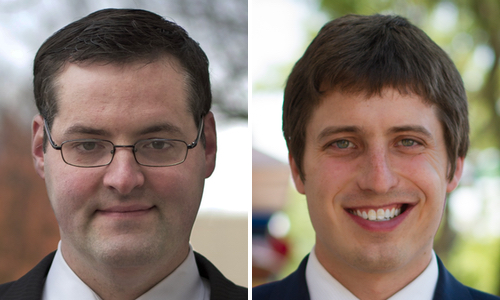Rising university costs, not falling state aid, is the real reason for lack of affordability
Every year, Michigan universities and other higher education interest groups lobby the Legislature to increase funding for the state’s 15 public colleges. A main talking point is that state cuts to appropriations have led to skyrocketing tuition. But data shows that this is not true: College tuition has skyrocketed way beyond the amount legislators trimmed from universities years ago, and the extra funding given in recent years has done little to relieve these costs for parents and students.
In order to bring tuition to what it was a decade ago, and granting an inflation adjustment, Michigan taxpayers would need to spend $2.8 billion, $1.5 billion more than it currently spends (see chart).
This assumes that schools would use all of these new resources to substantially reduce tuition rates for students, which is highly unlikely given universities’ past behavior.
The reason is because state university costs have substantially increased over the past decade, regardless of how much schools are getting from the state. In 2005-06, public universities collected $4.2 billion in total revenue, of which the state contributed $1.4 billion – or $5 billion in total revenues and $1.7 billion in state appropriations when adjusted for inflation. At that time, the average undergraduate tuition was $6,890.
Today, universities receive $6.2 billion in revenue, of which $1.3 billion comes from state taxpayers. Now the universities charge an average tuition of $11,866. Rising university costs, after adjusting for the number of full-year equivalent students, means that state taxpayers would have to more than double the amount they are spending on universities in order to bring tuition to what it was a decade ago.
In other words, anything less than a massive increase in state subsidies to public universities would have resulted in increased tuition rates for students and parents. Based on this evidence, it’s simply not accurate that rising college costs are driven primarily by reduced state support.
So what is driving tuition hikes? A likely main factor contributing to this phenomenon is the tendency of students to largely ignore costs when choosing a university. There is no incentive for universities to cut costs as long as students are willing to pay higher tuition – and so far, there has been little slowdown in the number of students wanting to attend college, despite it being more expensive than ever.
A reason for the lack of cost consciousness could be that the true costs are largely hidden. Schools have seen a dramatic increase in federal funding in recent years — education tax benefits and Pell grants have more than doubled and student loans have increased by about 75 percent. A recent study from the New York Federal Reserve says this increased federal spending on higher education has increased tuition between 55 and 65 cents for every $1 in federal grants and loans.
Perhaps schools believe all this new spending is justified, but it is hard to argue that students are getting that much better of an education today than they would have a decade ago. Even so, the benefits to students’ academic outcomes are certainly not enough to justify such large increased spending by universities.
And taxpayers get little in return for their spending on these institutions. The traditional justification – that more money results in a more educated state – is incorrect. There is no correlation between how much governments spend on public universities and how many college graduates or degree-holders choose to live in a state. For instance, New Hampshire and Colorado spend the least in the nation on public universities but have far more degree-holders than the average state, while Wyoming, Alaska and Mississippi spend among the most and are home to fewer college graduates than the average state.
Michigan taxpayers have better priorities to spend their money on than the state’s public universities. The amount spent does little to lower tuition or obtain more graduates. Legislators should spend the extra taxpayer money on infrastructure improvements and debt or give it back to taxpayers, who are better suited to find a superior use for the money than are politicians.
See what new members are saying about why they donated to Bridge Michigan:
- “In order for this information to be accurate and unbiased it must be underwritten by its readers, not by special interests.” - Larry S.
- “Not many other media sources report on the topics Bridge does.” - Susan B.
- “Your journalism is outstanding and rare these days.” - Mark S.
If you want to ensure the future of nonpartisan, nonprofit Michigan journalism, please become a member today. You, too, will be asked why you donated and maybe we'll feature your quote next time!


 James Hohman, left, is assistant director of fiscal policy at the Mackinac Center for Public Policy. Jarrett Skorup is a policy analyst at the Center.
James Hohman, left, is assistant director of fiscal policy at the Mackinac Center for Public Policy. Jarrett Skorup is a policy analyst at the Center. Click to enlarge
Click to enlarge